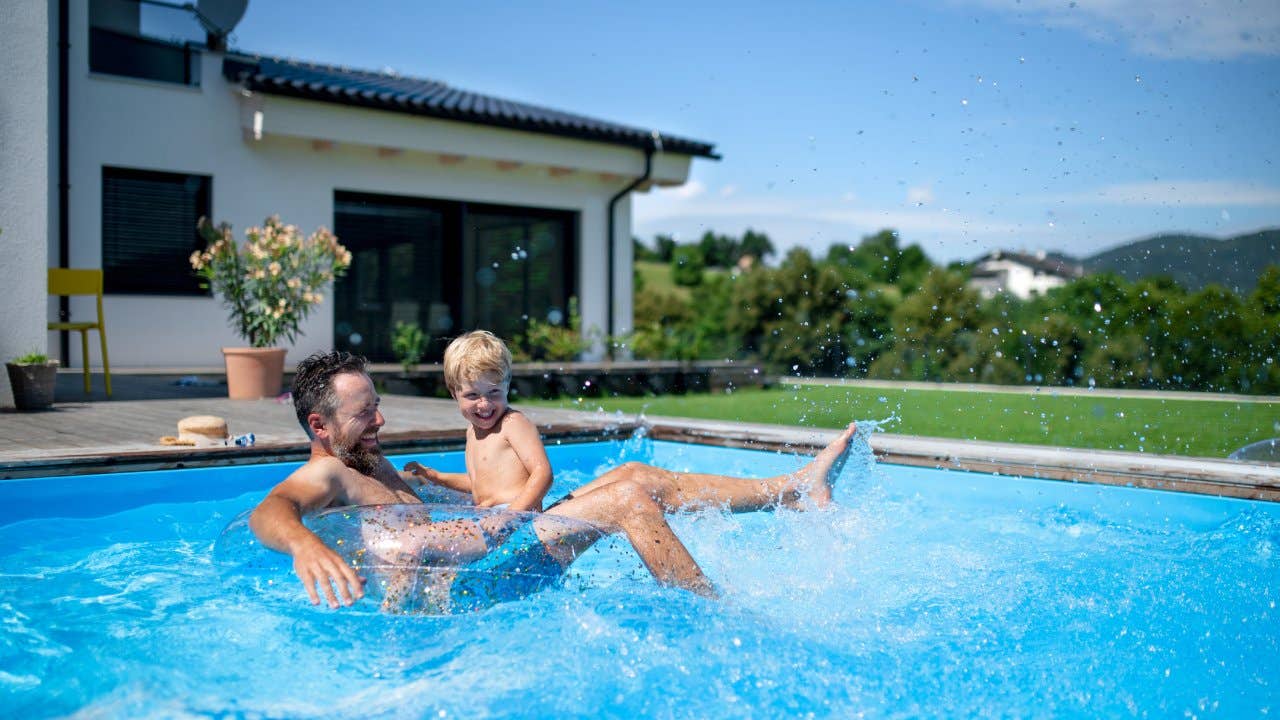How to buy a second home with no down payment

The Bankrate promise
At Bankrate we strive to help you make smarter financial decisions. While we adhere to strict , this post may contain references to products from our partners. Here's an explanation for .
A second home can provide a vacation getaway for your family, or serve as a rental property that generates income for you. It can also be a smart investment that can appreciate in value over time.
Unless you are able to pay cash, you’ll likely need to take out another mortgage loan to buy a second home. The purchase typically comes with a minimum down payment, as most home purchases do. But it’s possible to do without putting any money down — depending on the approach you choose. Read on for options on how to buy a second home with no down payment.
Can you buy a second home with no down payment?
Chances are, you’ll need to finance the purchase of a second home. Unlike a primary/first mortgage, which can sometimes be had for as little as zero down, most lenders require at least a 10 percent down payment on a second home mortgage. And most down payment assistance programs are reserved for first-time homebuyers purchasing a primary residence, so they typically can’t be used for second homes.
However, it is possible to buy a second home with a much lower down payment, or none at all — at least not in the traditional sense. Just be aware that even though it’s possible doesn’t necessarily mean it’s a smart idea. Buying a second home with no money down has the potential for serious downsides, so it’s something you should consider very carefully. Following are some popular methods to do it:
Methods of financing a second home with no down payment
If you’re able to make an all-cash purchase, there is no down payment or financing involved. However, most people lack the financial means to do so, and financing options are more limited when it comes to second homes, as government loans can only be used for primary residences. Here are some methods to avoid the 10 percent down payment typically required by a conventional second-home loan.
Government-backed loans
If you qualify, government loans offer the advantage of low- or no-down-payment financing. But didn’t we just say that these loans can’t be used for second homes? It’s true — but they can be if you make that second home your primary residence within 60 days of the purchase.
“You could buy a second home without a down payment if you get a government-backed mortgage and plan to turn the property into your primary residence,” says James DeZao, an attorney in Parsippany, New Jersey.
These government-backed loans are worth looking into, provided you intend to turn the second home into your primary residence quickly enough.
- One popular government loan is an FHA loan, backed by the Federal Housing Administration, which you can get for as little as 3.5 percent down if you are eligible.
- Another type, the Department of Agriculture’s USDA loan, requires no down payment at all. But there are other requirements, including the need for the property to be located in a USDA-approved rural area.
- If you are an active-duty service member, military veteran or surviving spouse, you could qualify for a VA home loan from the Department of Veterans Affairs. This type of loan may also be gotten with no down payment for those who are eligible.
Assumable mortgages
If you don’t intend to make your second home into your primary home, an assumable mortgage is worth considering. This means the buyer “assumes” the seller’s existing mortgage, without having to get a new one, and thus without putting money down upfront.
“Under this arrangement, you can take over the seller’s mortgage without having to make a down payment,” says DeZao. “Buyers usually opt for this to finance at the seller’s lower interest rate at a time when rates have increased since the seller purchased the home.”
Conventional loans are typically not assumable, but FHA, USDA or VA loans often are. “It’s crucial to research the existing loan, because some have a clause that forbids the new buyer from taking over the mortgage,” says Eli Pasternak, a Realtor with Liberty House Buying Group in Miami.
Reverse mortgages
If you’re 62 or older and your primary home is paid off (or close to it), taking out a reverse mortgage can provide funds to cover a down payment on a second home. But rates, fees and closing costs on these mortgages can be high, and these plus the payments on a second home can weigh you down financially. This industry is also prone to scams, so be extremely careful when exploring this option.
Buying from a family member who gifts you equity
Buying a second home with no money down is also possible if you have a relative who is willing to sell a home to you and “gift” you the equity they’ve already built in the property. This option can make it easier for family vacation homes to stay in the family through multiple generations.
“If a family member owns the property that you’re purchasing as your second home, they can gift the equity to you, so that it covers both the down payment and closing costs,” says Christina McCollum, regional manager for Churchill Mortgage in Kennewick, Washington. She gives the example of a second home being sold by a grandparent to a grandchild: “For example, let’s say the home is valued at $500,000, but is being sold for $300,000. The difference between the value of the property and what the property is being sold for is the equity, and only a family member can gift equity to a purchase,” she says.
Leasing with an option to buy
Some homes can be bought with a “rent to own” contract similar to that you’d find with a new-car lease. In these cases, you rent the home for a set period of time, with a portion of your payments going toward an eventual down payment. At the end of the home’s lease period, you have the option to purchase it using those set-aside funds.
“Many buyers are unaware of the possibility of renting a property from the owner with an option to purchase,” Pasternak says. “A lease-option agreement specifies the amount to be paid regularly by both the buyer and the seller for the usage of the property. During the life of the lease, this arrangement enables the lessor to purchase the property for a certain amount. In most cases, part or even all of the rental payments can be applied to the purchase price or down payment.”
Tapping into home equity or retirement savings
Both these options can provide funds to help cover a down payment on a second mortgage without draining your bank account — however, they both come with a fair amount of risk and may not be a good idea for everyone.
As the owner of a primary residence, the equity you have built in your home can be leveraged in the form of a home equity loan or home equity line of credit (HELOC). If you qualify, a lender will provide either a lump sum (in the case of a loan) or a revolving line of credit (in the case of a HELOC), and those funds may be put toward a second-home purchase. Be careful, though, because these are essentially second mortgages, and using them to finance another home purchase gives you three mortgages on just two properties. In addition, they use your primary home as collateral, so if you are unable to keep up with the payments, you could lose your home.
Withdrawing funds from your 401(k), IRA or another retirement account to pay for a second-home purchase is another option that’s possible, but risky. You may technically be allowed to make pre-retirement withdrawals from these types of accounts, but in many cases, you will be hit with an early-withdrawal penalty. Plus, dipping into these savings early makes it more challenging to retire comfortably at the age you desire.
Pros and cons of buying a second home with no down payment
There are obvious perks to purchasing a second home without having to put down a percentage of the cost upfront:
- You don’t need to drain your bank account to cover the initial costs.
- You can start enjoying your second home immediately, without having to wait a long time while you save up down payment funds.
- If you buy in a vacation destination, you can save money on hotel costs and potentially make money in rental income as well.
On the other hand, the disadvantages may outweigh the benefits:
- When financing any home purchase, the bigger a down payment you make, the less your monthly mortgage payments will be. That’s because the more you pay upfront, the less you have to pay back over time — with interest. So not putting down a down payment will mean a larger loan with higher monthly payments.
- Lenders often charge higher interest rates on loans with low or no down payments.
- In addition, private mortgage insurance will likely be required on a loan with no down payment, or even one with less than 20 percent down, which creates an additional cost for you.
- Finally, many of the no- or low-down-payment options come with serious risks, such as using your primary home as collateral or leveraging money that should be serving as your retirement nest egg.
Bottom line
If you dream of owning a second home, the typical down payment requirement of at least 10 percent doesn’t necessarily have to stop you. There are methods and loan programs that can make your dream a reality with no down payment at all. However, use caution when exploring these options: Some of them have real risks attached. Make sure you have a full understanding of what you are getting into before making the purchase.
Related Articles



41% of homeowners saved specifically for their first home. Here’s how renters can do the same
